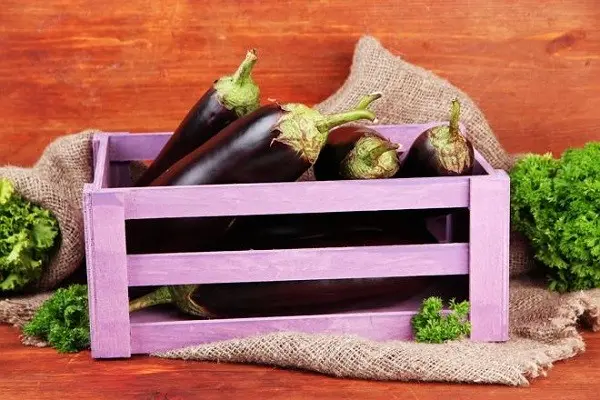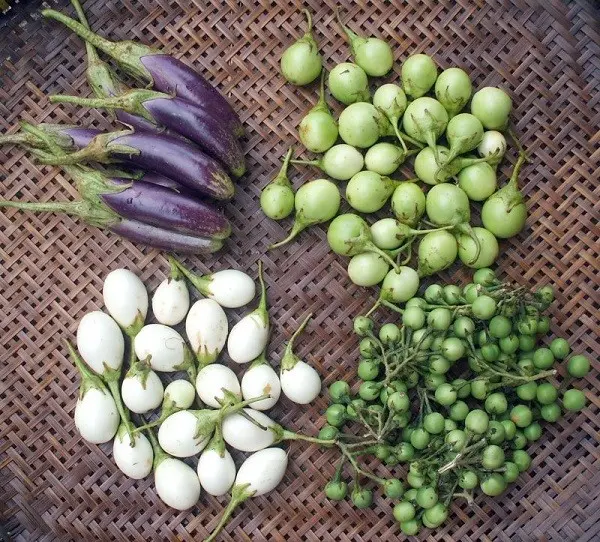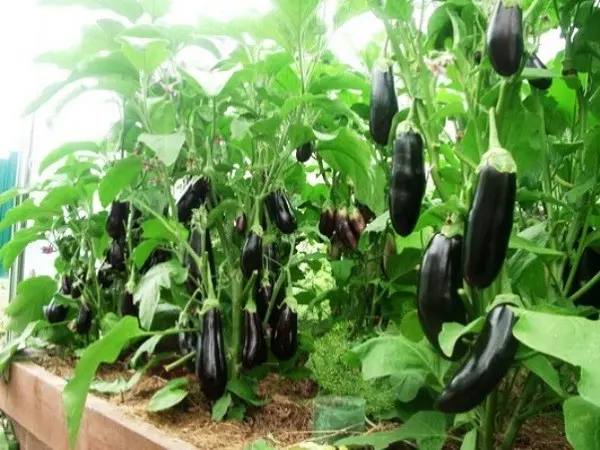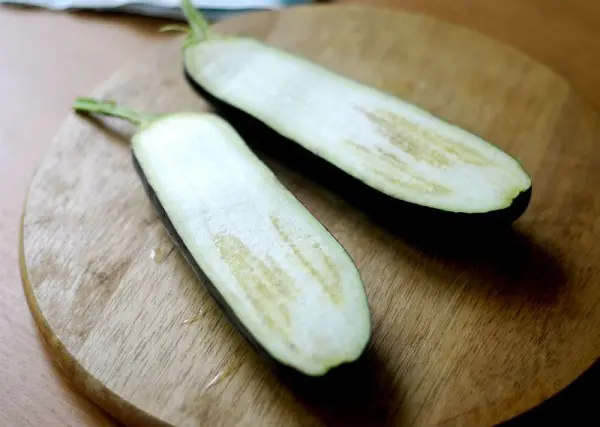Contents


For eggplant, two degrees of maturity are distinguished: biological and technical. In the first case, the full ripening of the fruit is implied, when the seeds turn brown, and the flesh is loose and bitter in taste. Such vegetables are suitable only for collecting seeds. Eggplants that have reached technical maturity are used for eating – a little unripe, but with good taste and without bitterness. In this regard, the question arises: how to determine this very technical ripeness, and by what signs to understand that the vegetable is ready for consumption?
By color
It should be clarified that the eggplant color appears even at the ovary stage – some novice gardeners who have not previously seen the ovary of this vegetable think that it, like a tomato, will acquire color when it ripens. Therefore, the main guideline in determining the ripeness of young fruits is not so much the color as the glossy surface. This is when the vegetable has already reached its biological maturity, its color will become brownish.

Now a wide variety of eggplant varieties are being planted, so you need to navigate by color based on the variety. The most common “blue” varieties are characterized by a rich purple-black color of the fruit. The vegetable retains this color during its growth, and begins to change it some time after reaching its maximum size.
For “blue” varieties, a sign that the vegetable is beginning to overripe is a slight lightening of the color, the formation of greenish foci or stripes at the top. The pulp of the fruit contains dense, but still white seeds. This eggplant can be eaten, but its flesh may be slightly bitter.
The main sign of technical ripeness of “blue” eggplants is a glossy (shiny), even and elastic surface. When pressed, the peel should be slightly springy and easily return to its original state. If the peel is so hard that it does not press with a finger, this is a sign that the vegetable has become overripe.
In white eggplant, technical maturity is expressed in an intense milky color. The surface of white vegetables, depending on the variety, can be both glossy and shiny, so the main guideline is a uniform milky color. When overripe, these fruits will turn yellow, and when they reach biological ripeness, they can even turn brown.
As for the color and luster of the peel, the “blue” varieties become overripe, acquire a brownish color and lose their glossy sheen. The peel becomes dull and flabby. In this case, the whole appearance of the vegetable will be unattractive and stale. Such fruits are no longer suitable for food.
To size
It is quite difficult to determine the degree of ripeness of an eggplant by size. First, you need to know the technical characteristics of the variety, and based on this, measure the length and diameter of the vegetable. Many vegetable growers are inclined to believe that eggplant, like zucchini, the younger, the tastier. However, one should not go to extremes – a young fetus can still significantly gain weight without losing its taste.

Can size indicate the degree of maturity of a vegetable? – the question is not fundamental, since eggplants can be plucked at any stage of growth. The main thing is to prevent overripe. If you still want to let them grow to their maximum size, then the main criterion indicating that the vegetable has reached technical ripeness can be the cessation of its growth within one week.
If you look closely at the young fruits, then their size increases daily by a couple of centimeters. And only growing to their maximum, they stop growing. If the eggplant has stopped growing in size, this means that it will soon begin to age, so there is no point in keeping it on the bush.
Video “Growing eggplant”
This video shows the process of harvesting eggplant.
By maturity
If you grow unusual hybrids on your plot, and you don’t know exactly what color, size and shape they should be, then the only guideline in this case is the ripening time of vegetables. Technical maturity of eggplant occurs on average 25-40 days from the beginning of flowering.

When sowing seeds, pay attention to the maturity of your hybrids, but rather save the packaging until harvest. If the variety is early ripe, then the first fruits can be harvested after about 100-115 days from the day the seeds were sown, or after 20-25 days from the moment the peduncle appeared.
For varieties of the middle ripening period, the technical maturity of the fruit occurs 115-125 days after planting the seeds, and for late ones – 120-140 days. But usually, hybrid varieties are distinguished by an early ripening period.
In any case, a mature hybrid, regardless of size and color, should have a resilient glossy surface. It should be noted that some “colored” eggplants in the ovary stage may have a rough peel, and even a slight hairiness, but in the process of ripening the peel evens out and becomes smooth.
According to the state of the pulp

The flesh of a ripe eggplant should be firm and elastic. At the stage of technical maturity, it contains soft, underdeveloped seeds that are easily cut with a knife. If the seeds come off and stick to the knife, it can be judged that the vegetable is slightly overripe. A slight bitterness may be present in such pulp – there is no bitterness in the young fetus.
The question may arise – how to find out the state of the pulp without cutting the eggplant? If you are picking vegetables at the market or supermarket, take a couple of the same size and weigh them in your hand. The heaviest pulp will have the densest and highest quality – as it ages, the pulp becomes loose, and its weight decreases. Approximately the same procedure can be done with the fruits on the bush. Of course, you should not tear it off, but you just need to lift the fruit, compare its weight with the size – an experienced hostess usually will not have any difficulties with this.
Video “Eggplant. Harvesting”
About when and how to harvest eggplants is discussed in the video.









